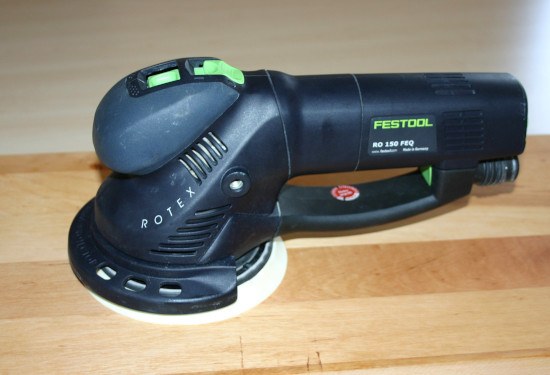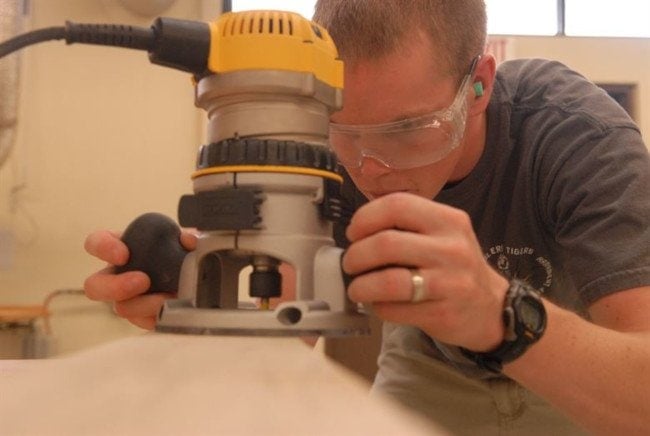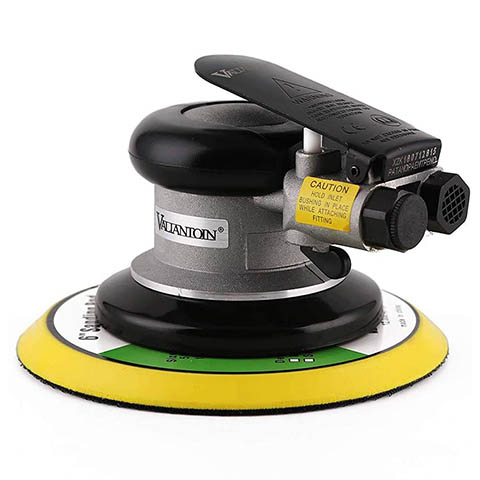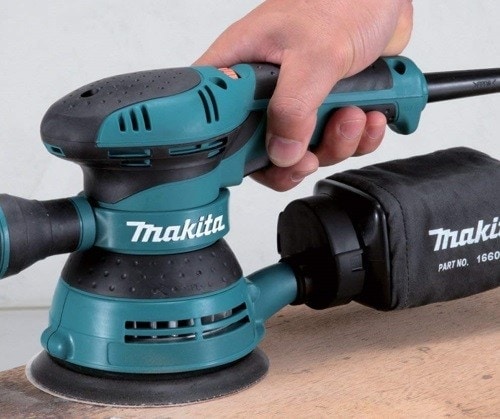What Is an Orbital Sander? Types, Uses & FAQ (With Pictures)
-

- Last updated:
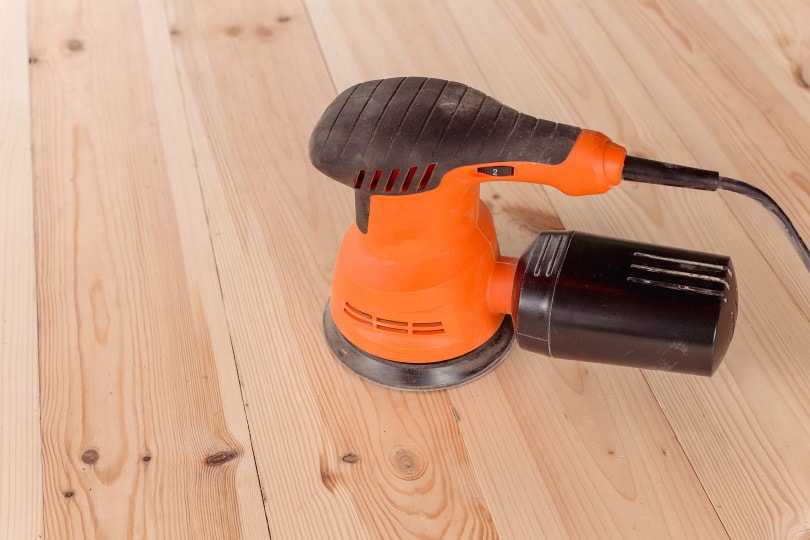
When working with wood or metal, you will inevitably need to smooth your surface if you’re performing any finish work. This work is almost always done with a sander. An orbital sander, or random orbital sander, is a handheld sander. It spins a piece of sanding paper in small ellipses, which cause the entire sander to move in an orbital fashion, hence the name. This differs from a standard palm sander which oscillates consistently but slower. Orbital sanders are ideal for working on flat surfaces and are relatively easy to use with a little practice.

How Does It Work?
Before we discuss how an orbital sander works, it will be helpful to examine how sandpaper works. Sandpaper gets in between the grains of the wood. The wood will get scratched up if you go across the natural grain of the wood, but if you go with the grain, it will be smoother. If it’s a finer grit, the sand will even get between the grain.
A handheld palm sander, such as an orbital sander, moves the sandpaper at a rate not humanly possible. But what makes a random orbital sander different from a standard sheet sander?
Underneath the disc of the orbital sander is a mounting board bolted onto an offset cam. The mounting board also has a little slop in it so that it’s not a tight fit. Since both are offset, the mounting board rotates randomly, and the oscillations are inconsistent. The purpose is to prevent an obvious circular pattern from the sanding in the wood grain.
Like a regular sheet sander, an orbital sander comes equipped with a dust collection bag that can be attached to the back. With sheet sanders, you usually have to puncture the holes in your sandpaper for it to draw up the dust, but most orbital sanding discs come with holes. They attach to the pad using Velcro, while the sandpaper on a sheet sander attaches with clips.

What Are the Different Types of Orbital Sanders?
Most models of orbital sander are more or less the same in function, but let’s look at them compared to sheet sanders.
Random Orbital Sander
An orbital sander has round sanding discs and always moves in a random pattern. The goal of the random movement is that since the user will be working in one area at a time on a given surface, any consistent movements that the user makes will be balanced out by the random motion of the sander.
Quarter-Sheet Sheet Sander
Most sanding paper for sheet sanders comes in sheets. A quarter-sheet sheet sander uses a quarter sheet which is then attached with clips on the side of the pad. Holes need to be punctured to collect dust, and the pad moves in a slight oscillating pattern.
Half-Sheet Sheet Sander
A half-sheet sheet sander does the same thing a quarter-sheet does, except it is larger and uses a half sheet.
Where Is It Used?
Random orbital sanders are ideal for any project where the wood you have is flat and rough. It will smooth out relatively quickly with the sander and moves faster than a regular sheet sander. The sandpaper should move incrementally from coarse to fine. Otherwise, you will scratch the surface. It can be used on nearly every wood surface and is even handy for removing rust and paint. It is not suitable for sanding in corners or where the sander has the potential for butting up against and damaging a perpendicular surface. In these cases, combining an orbital sander and a sheet sander is better.
Advantages of an Orbital Sander
The primary advantage of a random orbital sander is that it moves in a random elliptical motion, which minimizes the effect of a user’s regular motion. It prevents large circles from being ingrained into the wood from the elliptical motion. An orbital sander is also much faster than a sheet sander and can quickly move large amounts of material.
Disadvantages of an Orbital Sander
The downsides to an orbital sander are that it is not designed for coming up against perpendicular surfaces. The rounded edge can easily carve a groove into a wall or a bookshelf, and a square or rectangular sheet sander is preferable. The other downside is that since it is quick to remove wood, it is also quick to make mistakes. With a sheet sander, even though it is much slower, you can improve your work’s progress.

Frequently Asked Questions (FAQs)
What Are the Grit Levels of Sandpaper?
Sandpaper gets the job done since it is a rough surface causing friction on another smooth surface. The grit of sandpaper is determined by how many pieces of sand there are per square inch of paper. For example, the pieces of sand on a hundred grit will be larger than those on a #220, making it coarser and ideal for removing large amounts of material. Grit is numbered from 40 to 1200. Even though it goes up to #1200, that level of grit is scarcely used for woodworking.
What Is Grit Progression?
Grit progression is the process of sanding where different grits are chosen for the given phase in the project. For example, you might start at #80-grit to remove large amounts of material, but then you will move up to #150-grit or so.
Can You Go from 80 Grit to 220 Grit?
In general, you should not move too drastically from coarse to fine in your progression. If you start with #80-grit, the next step should be to move to a medium grit of anywhere between #100- and #150-grit. If you move up too drastically in grit level, you will put unnecessary stress on your sander and cause excessive wear on the paper itself.
A Quick Reference Guide
In some cases, you may be able to create a table for quick reference (not mandatory). See the example below:
| When to Use an Orbital Sander | When to Use a Sheet Sander |
| Rough Material | Bookshelves |
| Paint or rust removal | Countertops |
| To remove large amounts of material | Corners |

Conclusion
If you are a novice woodworker and need time to ensure each project phase is going right, then maybe an orbital sander is not for you. It can remove a lot of material in a short period. Always be sure to wear eye protection and keep your orbital sander on a flat plane. Don’t angle it, or it will wear away the backing pad and leave marks on the wood. It can also kick back on you if you use it incorrectly.
Featured Image Credit: evgengerasimovich, Shutterstock
Contents
